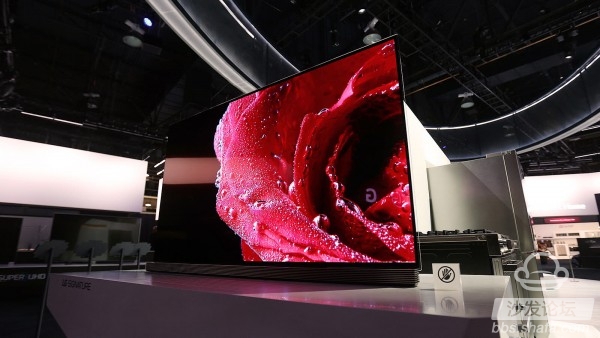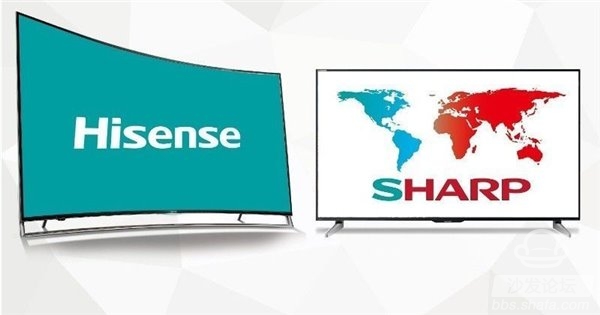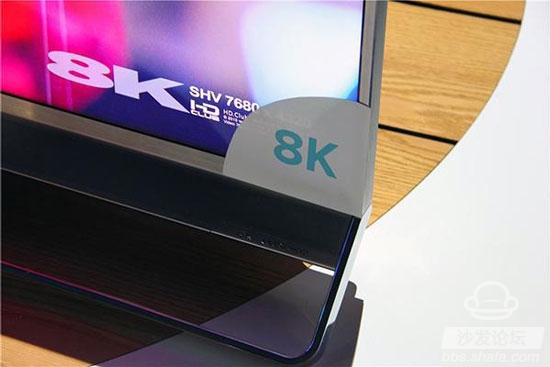Since its birth, the concept of smart TV has been rapidly developing with the spark of pride. 4K? OLED? There are HDR high dynamic range image technologies that have recently become more dynamic... Every year, smart TV industry will have new technologies and new expectations. Looking back at the domestic market, both old hardware manufacturers and emerging Internet brands are shifting from simple low-tech and low-price strategies to high-tech and cost-effective strategies. Chinese manufacturers led by Hisense and TCL are based on independent research and development. The technology strives to promote its own TV brand to the world. Today, Xiaobian from the sofa network has come to give everyone a look at the most promising development trends in the 2016 smart TV industry!

· More Made in China!
In fact, in the past few years, China has been developing rapidly in the emerging industry of smart TV. According to the statistics of IHS last year, the domestic brands Hisense and TCL are among the world's top ten TV brands, second only to Samsung, LG and Sony. This also allows the people to look forward to further increase in the world share of Chinese brands in 2016.

Among them, Hisense relied on its own ULED technology, with a high-quality picture in the OLED surround smart TV products to kill a blood. And in the past year, the Sharp trademark was used in the United States to provide further conditions for the expansion of overseas markets. It is reported that in 2016, Hisense will launch a brand new Hisense + Sharp brand smart TV.
Another noteworthy Chinese brand, TCL, launched the world’s first 4K smart TV supporting Roku last year and achieved very good results. Let us also look forward to TCL’s new products in 2016.
· Increasing popularity of OLED technology
The long-term interest in the smart TV industry is worthwhile, and OLED is definitely the key word for the 2015 smart TV market. The full name of OLED is Organic Light-Emitting Diode (organic light emitting diode). Unlike LCDs that require a backlight to control light emission, OLED materials can emit light, and the self-luminous nature of OLEDs has the advantage that ordinary LCDs cannot match. For example, when displaying black, OLED screens can exhibit a "completely thorough" black color. The best LCD is also unmatched.




· Other TV technology trends worth noting:

· More Made in China!
In fact, in the past few years, China has been developing rapidly in the emerging industry of smart TV. According to the statistics of IHS last year, the domestic brands Hisense and TCL are among the world's top ten TV brands, second only to Samsung, LG and Sony. This also allows the people to look forward to further increase in the world share of Chinese brands in 2016.

Among them, Hisense relied on its own ULED technology, with a high-quality picture in the OLED surround smart TV products to kill a blood. And in the past year, the Sharp trademark was used in the United States to provide further conditions for the expansion of overseas markets. It is reported that in 2016, Hisense will launch a brand new Hisense + Sharp brand smart TV.
Another noteworthy Chinese brand, TCL, launched the world’s first 4K smart TV supporting Roku last year and achieved very good results. Let us also look forward to TCL’s new products in 2016.
· Increasing popularity of OLED technology
The long-term interest in the smart TV industry is worthwhile, and OLED is definitely the key word for the 2015 smart TV market. The full name of OLED is Organic Light-Emitting Diode (organic light emitting diode). Unlike LCDs that require a backlight to control light emission, OLED materials can emit light, and the self-luminous nature of OLEDs has the advantage that ordinary LCDs cannot match. For example, when displaying black, OLED screens can exhibit a "completely thorough" black color. The best LCD is also unmatched.

Only LG, which was once able to produce OLED TVs, has an extremely expensive product. This will change in 2016. First, the domestic brand Skyworth announced the successful production of the country’s first OLED smart TV, and some Chinese TV manufacturers may also enter the OLED market, followed by Panasonic’s Sony’s 2016 OLED product plan. Also let consumers expect to see more OLED TVs in 2016. Only with the expansion of production scale and the intensification of competition, the price of OLED TVs can fall faster!
· New favorite in smart TV industry: HDR
The new trend in television technology can attract the attention of people all over the world every time. 3D technology has been the focus of much attention, and later became OLED technology, followed by 4K and ultra-high-definition leading the trend. TV industry professionals see HDR as a TV technology that is more important than 3D or 4K. The benefits of HDR are more obvious than 4K and more attractive than 3D.
Since 4K TV has basically become mainstream, and the price is getting cheaper, the profit margin has become very small. Therefore, people who are eager for the advancement of TV technology are eagerly looking forward to new products – one is more price and ambition. High product. Because of this, TV manufacturers are now very optimistic about the prospects of HDR technology, I believe this technology allows consumers to spend more money on bigger and better TV products.

First of all, TV HDR is not the same thing as photo HDR. The “HDR†option on mobile phones or cameras combines a large number of photos with different exposures to make up for the lack of sensor functionality. The high dynamic range image we are talking about here is a common vocabulary used to describe new, improved content, namely television episodes and movies, and brand new TV sets that can play such content. The most accurate description of HDR that we are hearing now is “not only more pixels, but better pixels.†The common 4K resolution is only an increase in the number of pixels, while HDR significantly expands those The contrast and color range that the pixel can display. The bright part of the image will become more bright, so the image looks more "deep." Color quality will also be improved, and colors such as blue, green, and red will become more prominent.
Just as you need to watch a 3D or 4K resolution video with a new type of TV, you will need a new type of TV to watch HDR images. We expect that most TV manufacturers will launch TV sets that can handle HDR content in 2016. The price of HDR is neither cheap nor easy to implement on TV. In addition to the 4K resolution, it requires an additional series of capabilities. In terms of content, it needs to establish cooperation with industry stakeholders such as Hollywood film and television companies, Netflix, Amazon Instant Video and other content distributors or manufacturers, and TV manufacturers. So, the HDR content may be scarce for some time. For example, in the foreseeable future, it will certainly be less common than 3D and 4K content. HDR images are very effective. You may see many impressive product demos at this year's CES. However, how well these demo products fit into the living room is still unknown.
· The first 4K Blu-ray player finally came
In the first half of 2016, we are confident that the first batch of 4K Blu-ray players will be officially launched. Panasonic (as shown below) and Samsung will be the first “crab†manufacturers and own their own studios. Sony is also expected to follow soon.

The price of the first 4K ultra-clear blue-ray players should not exceed 500 US dollars, although the price is still not low, but even slightly cheaper than we previously expected. After all, if you want to compete with 4K online video, the price of the 4K Blu-ray player and the corresponding CD must be competitive. Compared with 4K online video, 4K Blu-ray still has obvious advantages in picture quality and sound quality, but this is not the reason why 4K Blu-ray players are the most concerned...
· Resolution reached a new high! 8K Smart TV appears!
While everyone is still struggling in 4K, OLED, LG has already launched a new generation of 8K resolution smart TV!

The Verge revealed that all 4K TVs from LG will be fitted with display technology called "HDR-Plus" this year. LG officials claim that "HDR-Plus" can actually be seen as a merger of Color Prime Plus and Ultra Luminance, the former through a new layer of filters, output close to the digital cinema's color range. Engadget said that the color range of LG's new products can reach 90% of digital cinemas. Ultra Luminance technology can dramatically increase the picture contrast.
From LG’s announcement, we can speculate that in 2016, all major TV manufacturers may begin to test 8K TVs, and introduce more mature display technologies and software upgrades in 4K TVs to improve 4K TVs. Experience.
· Other TV technology trends worth noting:
4K TV will be everywhere: Nearly all TVs introduced at this year's CES show will have 4K resolution, and viewers may not see TV products with less than 1080p resolution. 4K TVs are cheap and varied, and are definitely the first choice for many users who want to buy TVs.
Slow spread of 4K content: In a strict sense, this is not a TV hardware trend, but 4K Blu-ray technology will be officially unveiled at this exhibition. The Samsung UBD-K8500, which was first introduced at the IFA exhibition in September this year, should be available in early 2016. We would not be surprised to see if other manufacturers have introduced such products. TV manufacturers such as Sony will launch 4K Blu-ray discs in early 2016. If we are lucky, there may be vendors that will launch more 4K streaming content.
LG OLED TV vs. Samsung LCD TV: Thanks to LG's dominance in OLED TV technology, the company acclaimed CNET's list of “Best Image Quality Manufacturers†and achieved significant results in 2015. success. We estimate that Samsung and other LG competitors will not introduce OLED TVs, but brands like Panasonic may sell OLED TVs worldwide. Panasonic currently sells OLED TVs in Europe. At the same time, we expect that manufacturers such as Samsung will actively promote the advantages of LCD over OLEDs, that is, the light output function will be improved.
Platformization of Smart TV: Last year, Sony and Sharp officially launched the first batch of Android TVs. At the same time, the Roku TV brand camp further expanded, and Sharp, LG and Insignia all integrated with the Roku platform. Will platform-based smart TV systems replace today's common self-developed software? Don't expect Samsung and LG to invest in Tizen and Web OS systems, but smaller companies may choose to own Smart TVs use platforms such as Android or Roku.
Curved TV penetration: Although Samsung is a trend leader in the TV industry, we estimate that not only will LG introduce more OLED models, but there will not be too many TV makers joining the ranks of curved TVs. However, TV design will continue to be a hot topic, whether it is on glass or metal materials, or on increasingly thin designs.
With regard to the development of the new year's smart TV industry, what are your expectations and prospects? May wish to say your thoughts here? More Smart TV related information, please continue to focus on the sofa (http://)
